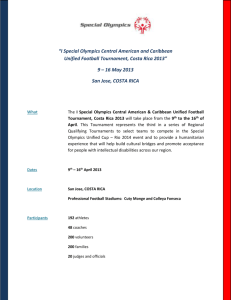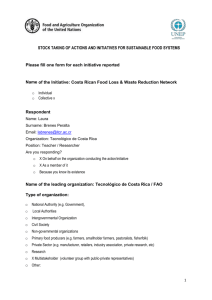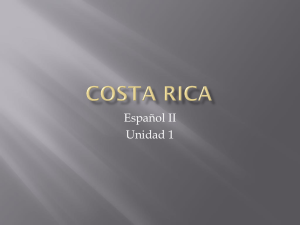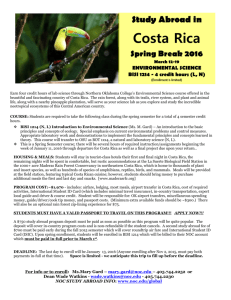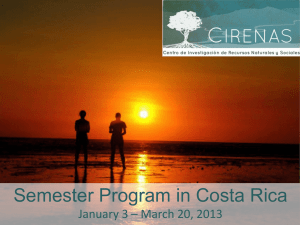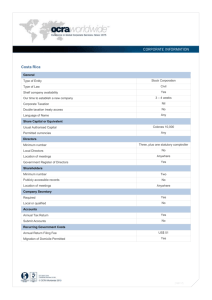View paper
advertisement
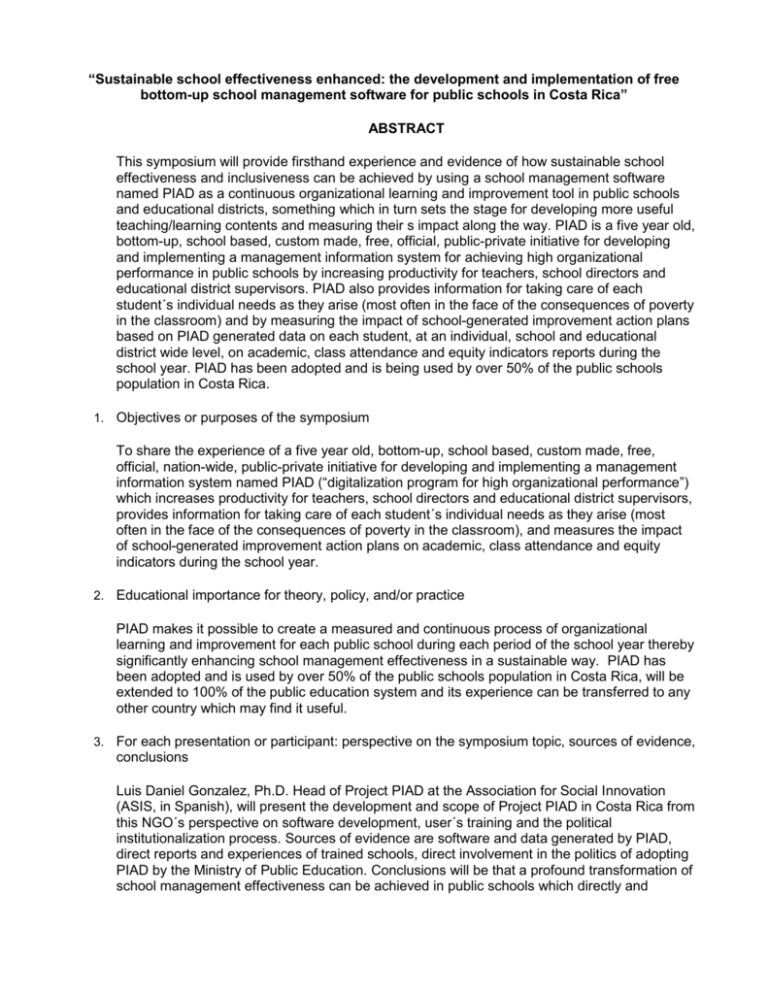
“Sustainable school effectiveness enhanced: the development and implementation of free bottom-up school management software for public schools in Costa Rica” ABSTRACT This symposium will provide firsthand experience and evidence of how sustainable school effectiveness and inclusiveness can be achieved by using a school management software named PIAD as a continuous organizational learning and improvement tool in public schools and educational districts, something which in turn sets the stage for developing more useful teaching/learning contents and measuring their s impact along the way. PIAD is a five year old, bottom-up, school based, custom made, free, official, public-private initiative for developing and implementing a management information system for achieving high organizational performance in public schools by increasing productivity for teachers, school directors and educational district supervisors. PIAD also provides information for taking care of each student´s individual needs as they arise (most often in the face of the consequences of poverty in the classroom) and by measuring the impact of school-generated improvement action plans based on PIAD generated data on each student, at an individual, school and educational district wide level, on academic, class attendance and equity indicators reports during the school year. PIAD has been adopted and is being used by over 50% of the public schools population in Costa Rica. 1. Objectives or purposes of the symposium To share the experience of a five year old, bottom-up, school based, custom made, free, official, nation-wide, public-private initiative for developing and implementing a management information system named PIAD (“digitalization program for high organizational performance”) which increases productivity for teachers, school directors and educational district supervisors, provides information for taking care of each student´s individual needs as they arise (most often in the face of the consequences of poverty in the classroom), and measures the impact of school-generated improvement action plans on academic, class attendance and equity indicators during the school year. 2. Educational importance for theory, policy, and/or practice PIAD makes it possible to create a measured and continuous process of organizational learning and improvement for each public school during each period of the school year thereby significantly enhancing school management effectiveness in a sustainable way. PIAD has been adopted and is used by over 50% of the public schools population in Costa Rica, will be extended to 100% of the public education system and its experience can be transferred to any other country which may find it useful. 3. For each presentation or participant: perspective on the symposium topic, sources of evidence, conclusions Luis Daniel Gonzalez, Ph.D. Head of Project PIAD at the Association for Social Innovation (ASIS, in Spanish), will present the development and scope of Project PIAD in Costa Rica from this NGO´s perspective on software development, user´s training and the political institutionalization process. Sources of evidence are software and data generated by PIAD, direct reports and experiences of trained schools, direct involvement in the politics of adopting PIAD by the Ministry of Public Education. Conclusions will be that a profound transformation of school management effectiveness can be achieved in public schools which directly and continuously can improve academic performance, class attendance and equity issues such as student nutrition, economic scholarships and basic health problems. Dr. Felix Barrantes Ureña, Head of the Management and Evaluation of Education Quality Unit of the Ministry of Public Education of Costa Rica (MEP), which is the unit officially in charge of implementing PIAD across the public education system in Costa Rica, will present his unit´s efforts to implement PIAD for the last five years and plans for the future. He has been directly involved in education quality for over 25 years. Sources will be his firsthand account of heading the public-private partnership joint committee´s meetings, and of leading a year and a half long pilot project to fully implement PIAD in a densely populated educational district. Conclusions will be that a long-term public-private partnership is what has made it possible to achieve a nation-wide sustained effort to develop and implement PIAD and thus school management effectiveness and that a district-level integrated implementation of PIAD has an even more significant impact in educational effectiveness and quality in each public school because of the additional institutional support it carries and the synergies between schools it creates. 4. Explanation of how the symposium session will be organized The session will consist of two 30 minutes oral presentations with multimedia tools and a 30 minute question and answers period. 5. Connection to themes of the conference This symposium will provide evidence of how sustainable school effectiveness and inclusiveness can be significantly enhanced by using this management software as a continuous organizational learning and improvement tool at public schools and educational districts, something which in turn sets the stage for the development of more useful teaching learning contents and measuring their impact on each student along its way. A General Description of PIAD Costa Rica´s PIAD is an innovative program that combines software and data to improve management, educational outcomes, and access to social services in public schools. PIAD was developed by a public-private-partnership comprised of ASIS and AED, civil society organizations; ANDE, a teacher´s union; and the Ministry of Public Education. The program provides and maintains digital infrastructure that tracks educational indicators, student characteristics and other parameters at public schools. PIAD feeds this information to specialized software that generates reports for directors, teachers, and other beneficiaries. These reports are used by beneficiaries to identify areas for improvement, guide administrative decisions, and improve resource allocation as a permanent process. PIAD´s infrastructure also allows beneficiaries to monitor student and teacher attendance, academic performance, and other outcomes via digital records generated by the program. Finally, the program also serves as an administrative tool as it automates and digitizes several processes and records including matriculation and test scores. PIAD currently is being used in over 2,000 Costa Rican public schools where it has been celebrated on several fronts. PIAD´s digital records and registrar have jointly saved yearly the Costa Rican government 700 million colones (1.3 million USD); and digital matriculation has saved 1, 000 million colones (1.9 million dollars). The program has also been credited with bolstering schools´ ability to match eligible students with social programs, particularly school meals, basic healthcare, and scholarships. Finally the program has streamlined officials´ access to the information required to report school needs and generate response strategies and enhance public policy. PIAD success on these and other fronts has earned it push within Costa Rica´s public education system. Objectives, Components and Output The following table contains a list of areas PIAD aims to improve and the corresponding components and outcomes the program sponsors to reach these aims. Objective Components / Output Process Automation and Digital Record Keeping Digital Attendance records Digital Matriculation and student records and files Digital Student and Teacher Reports Improving Administrative Processes Digital Financial Records Structured Scheduling Structured Curricula Balanced Group Formation Bettering Educational Outcomes Creating and measuring the impact of evidence based school improvement action plans which specifically aim at improving academic performance, school attendance and social services Bolstering Parental Involvement Automated truancy alerts Quantitative Progress Reports Social Services Student Social Economic Profiles Digital “matching” of students to social programs promoting basic health, school lunches, and scholarships Improving access to these programs Verification of student usage of social service Report generating correlations between these services and student performance More information at: Facebook: Proyecto PIAD Asis Website: www.piad.or.cr




